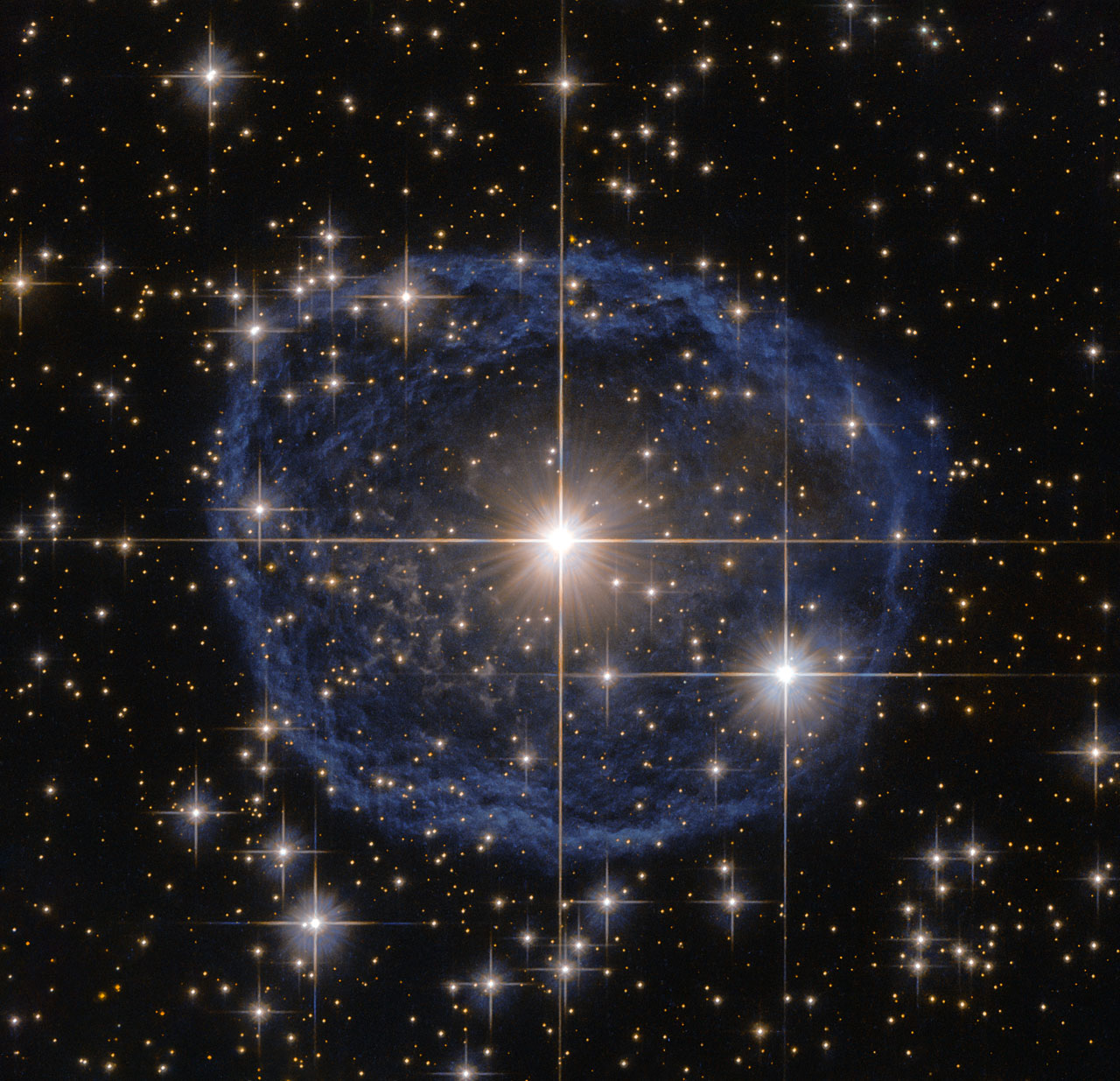
NASA’s Hubble Space Telescope captured an image of a star some 30,000 light years away surrounded by a mysterious blue bubble.
That bubble is actually not a bubble at all, but a Wolf-Rayet nebula or a cloud of dust, hydrogen, helim and other gasses surrounding star WR 31a, according to NASA. The cloud most likely formed when space winds interacted with the outer layers of hydrogen ejected by the star. The space agency says the bubble is estimated to have formed around 20,000 years ago and is expanding at a rate of around 220,000 kilometers (136,700 miles) per hour.
WR 31a, is part of the Carina constellation, known as the Keel. Wolf-Rayet stars like WR 31a don’t have a very long life span when compared to others stars, a few hundred thousand years—WR 31a will eventually end in a super nova, says NASA,
More Must-Reads From TIME
- Dua Lipa Manifested All of This
- Exclusive: Google Workers Revolt Over $1.2 Billion Contract With Israel
- Stop Looking for Your Forever Home
- The Sympathizer Counters 50 Years of Hollywood Vietnam War Narratives
- The Bliss of Seeing the Eclipse From Cleveland
- Hormonal Birth Control Doesn’t Deserve Its Bad Reputation
- The Best TV Shows to Watch on Peacock
- Want Weekly Recs on What to Watch, Read, and More? Sign Up for Worth Your Time
Contact us at letters@time.com